Is the Moon There When Nobody Looks? Reality and the Quantum Theory. N. D. Mermin in Physics Today 38:38 (1985).
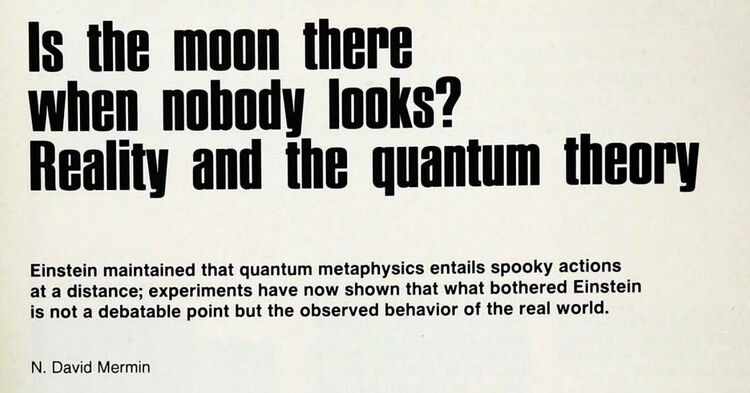
In this paper, Mermin aims to make the EPR paradox understandable to people even without a background in the formalism of Quantum Mechanics. This is neither a small feast as even people who master the formalism often fail to understand it well (including leading celebrities, as the text shows), nor a trivial business as this is something so mind-boggling on the very nature of our Universe that this is indeed something that everybody should get some notion about (along with concepts such as the impossibility for perpetual motion machines or the conservation of energy; probably even more). Even though he describes it as "a somewhat refined version of [the] argument published" in Ref. [1]—which Feynman had deemed one of the most beautiful papers in Physics (Feynman also makes a cameo at the end of this one)―I find the first paper more readable and to the point, although this one has more substantial background and historical discussions.
At the heart of the exposition is a formulation of the EPRB, i.e., Bohm's version of EPR, experiment in terms of a simple device:
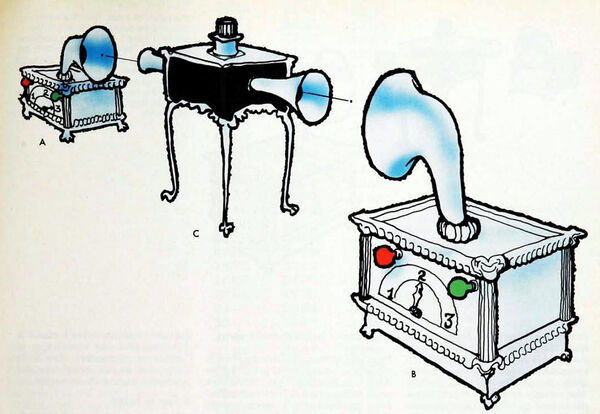
Anybody can understand what this does: something, in the middle (C), sends something else to two detectors (A & B), which have 3 settings each, flashing a color as a result of their detection. What is difficult is to understand how it does what it does, namely, producing patterns of colors for the various settings. One would imagine that the particles or waves or whatever is being sent from C to A & B, has some instruction of which colors will flash. Mermin shows that this is not possible. You would then think that the device itself is impossible, but Mermin shows how you can construct one and further tells us that someone did it,[2] and saw it work as stated:

If only because this is the refined version of what is supposedly one of the most beautiful physics texts ever written, you should read it in detail yourself.
For my own recollections, I wish to highlight what Einstein would have thought according to a prestigious (unnamed) Princeton physicist:
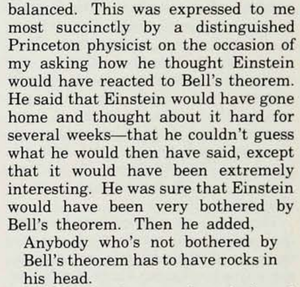
Mermin's own attitude is reflected by how he regards other physicists':
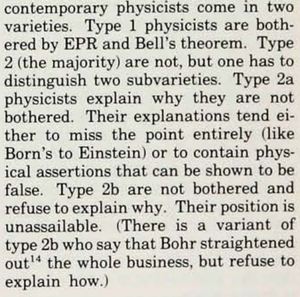
He also reproduces a letter from "a California thinktank to the Undersecretary of Defense for Research and Engineering" foreseeing "an untappable and unjammable command-control-communication system at very high bit rates for use in the submarine fleet." This was before Eckert's paper doing something useful with the effect.[3]
This passage is reminiscent from The Dark Tea Time of the Soul, useless, but spectacular! (the girl reciting yesterday's lottery telepathically)
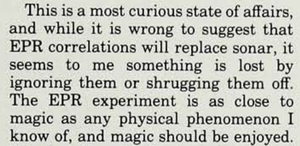
It also comes with many interesting references, including:
- The Philosophy of Quantum Mechanics, Wiley, New York (1974)
- The Born-Einstein Letters, with comments by M. Born, Walker, New York (1971) (which Mermin says "sometimes reads like a Nabokov novel")
- "Cognitive Repression in Contemporary Physics" by E. F. Keller, Am. J. Phys. 47, 718 (1977).
The finish, with a tribute to Feynman recast as a poem, is amazing:
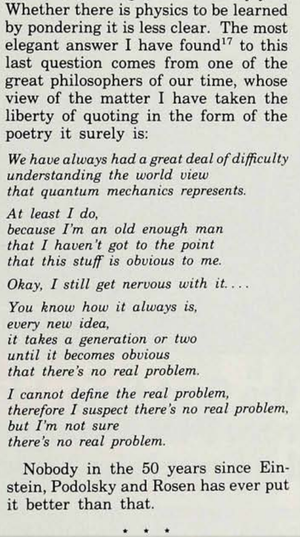
References
- ↑ Bringing home the atomic world: Quantum mysteries for anybody. N. D. Mermin in Am. J. Phys. 49:940 (1981).
- ↑ Experimental Tests of Realistic Local Theories via Bell's Theorem. A. Aspect, P. Grangier and G. Roger in Phys. Rev. Lett. 47:460 (1981).
- ↑ Quantum cryptography based on Bell's theorem. A. K. Ekert in Phys. Rev. Lett. 67:661 (1991).